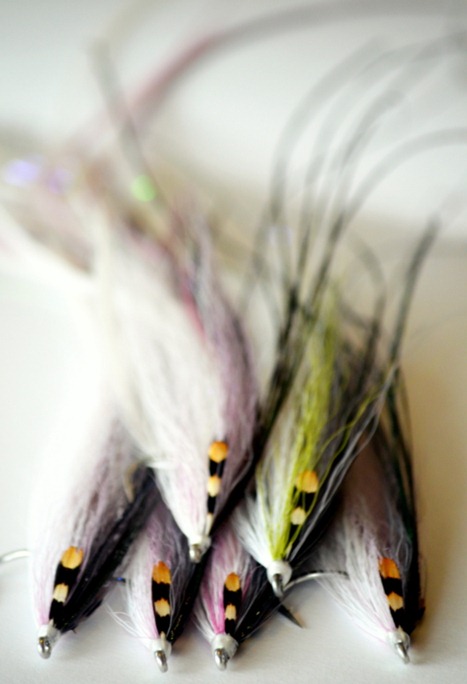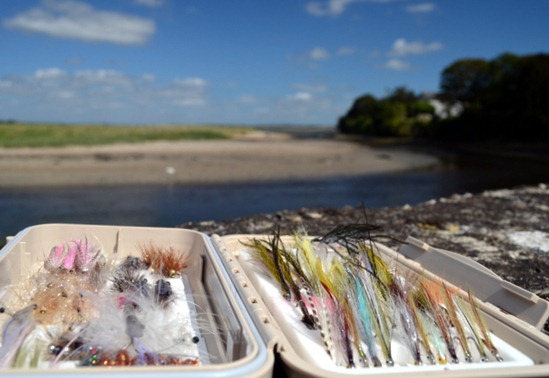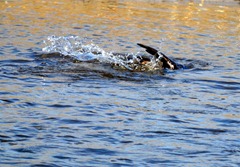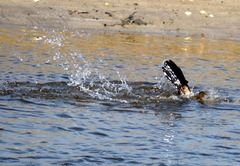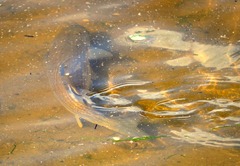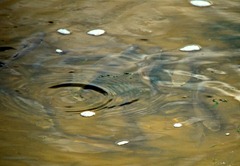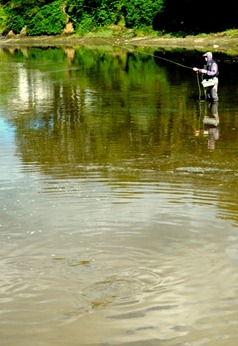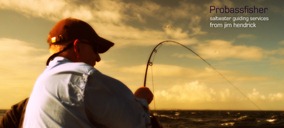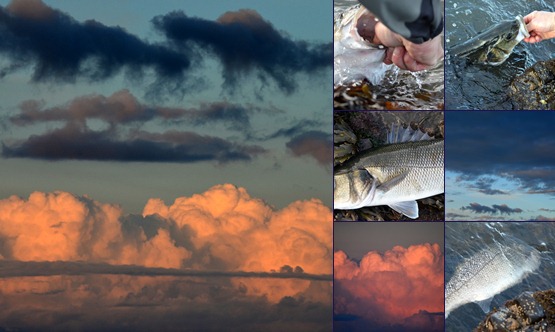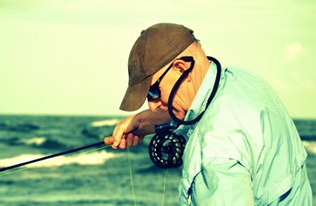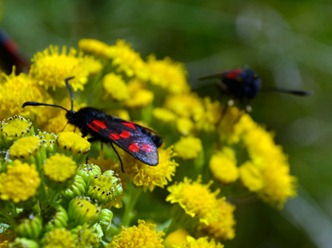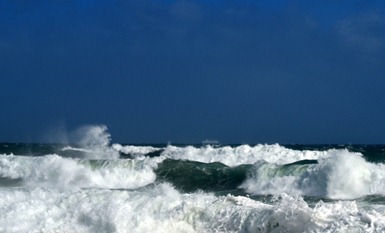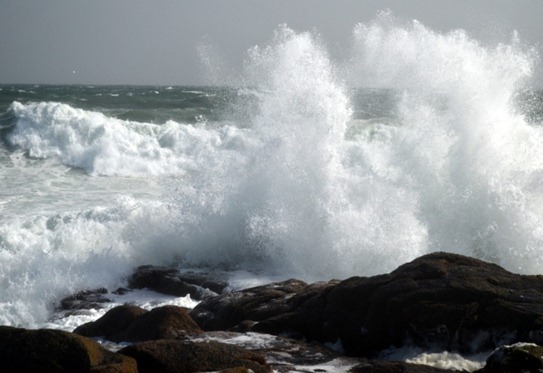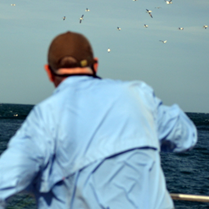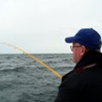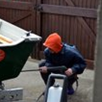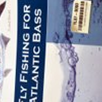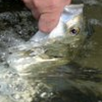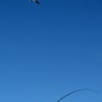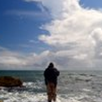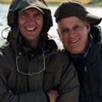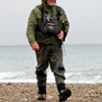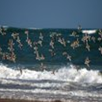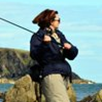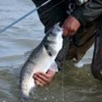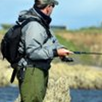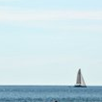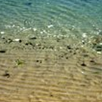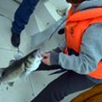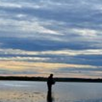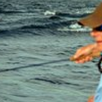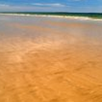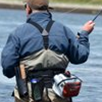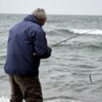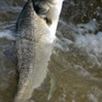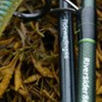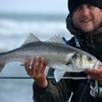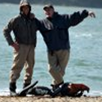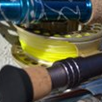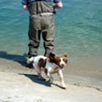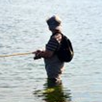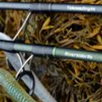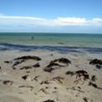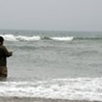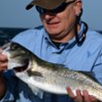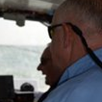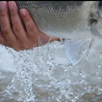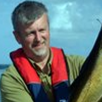See these and more on my stand at the Hooked live show February 2013
Friday 31 August 2012
Monday 27 August 2012
Saltwater fly - Rocky shore to Estuary
Sunday 26 August 2012
Saltwater fly fishing in Ireland
The original plan was to work and build an editorial with a well known game angling magazine. I made a decision to postpone the editorial until later in the year anticipating an improvement in both weather and the fishing.
John has been busy and hasn’t cast a fly since May, warming up with a short session and few casts late yesterday evening this was the result.
Three people one fish for a long effort – still difficult!
Landing gear
Rod: Redington CPX #8
Reel: Danielsson LW 6-9
Line: Rio Outbound F #8
Leader: Airflo poly 10’-0” saltwater with fluoroflex + tippet
Fly: Chartreuse and white bucktail deceiver from Brian Healey
Friday 24 August 2012
Hand made by local experts
I like things that are made by hand by people I have met and worked with. I have no hesitation in talking about Andy Elliot and his super saltwater flies or Brian Healey and his own incredible range. Working with people like Andy and Brian allows you to add a sense of individual contribution and creativity to a constantly evolving and changing product, a sense of self input of experience and instinct. You think you know and understand what the fly needs to do, look like, how it needs to behave and the people working and building the flies know how to fit the material and hooks to achieve many things including limits and capabilities.
Like most things that work the combined constituents of a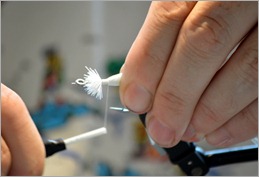 saltwater fly go way beyond material, there’s time spent testing, time changing, testing again, evolving, talking, observing, more time changing and finalising, the end result is often a completely unique and special variation on an already established pattern.
saltwater fly go way beyond material, there’s time spent testing, time changing, testing again, evolving, talking, observing, more time changing and finalising, the end result is often a completely unique and special variation on an already established pattern.
Getting it right is a long, challenging and interesting process. Its not as simple as making a fly, casting and catching fish. A difficult year like 2012 sets projects like fly prototypes in development back in time, because you cant work you can’t test, you loose your momentum and stop, you cant evolve and improve or promote. Getting this development going again for the last quarter of the season and the season for 2013 is now the task at hand, if it improves of course!
I had a wonderful half days fly fishing with Rink van der Wal this week– during our many conversations he mentioned he built rods from CTS blanks. I am familiar with CTS as Casper Hansen a fly fishing customer from Denmark also used these blanks for his own rods and fished with them here during 2010. Rink showed me the rod he had hand built himself from a range of the best quality components available – Rink now has a winter project to complete for me, hand made ready for spring 2013, I just cant wait!
I guess support comes in many ways and I certainly know I get a lot of it from many people, a word of encouragement here or there, a website link, an e-mail or other acknowledgement. They keep you positive and often times sane. There are many smaller sustainable bespoke opportunities for employment, of genuine expertise, people with experience and skill which exist in local communities in this country that are connected directly or indirectly to bass fishing which need support too.
If we cant do that at least, then what can we do?
_____________________________________________________________________
Some techie type notes for you regarding the rod build.

| Material Grade | Ultra sensitive 57msi high modulus |
| Taper | Fast |
| Action | Fast - Extra-Fast |
| Color | P2000 or Clear Gloss (other colour's available) |
Fly Rod Terms Explained from CTS
The CTS Fly Blank range has been carefully designed to cater for all disciplines of fly fishing. Each range encompasses specific features that make it a stand out blank with in its category.
CTS fly blank terms explained
In designing, we use two different terms to describe the feel of our blanks. Action and Taper. For the most part these two components of our designs are closely related to provide a well balanced blank that is quite specific in its discipline.
Action, commonly referred to as the lock up point, is where our blank first starts to stiffen dramatically. This affects the strike action of the blank and determines to a large extent the casting style. We use actions from slow through to extra fast. Outlined are our three basic categories:
Slow
This is an extremely graceful action that has a very subtle lock up point around mid way. Our Vintage Series, based on the traditional cane style, combines this action with a slow taper, allowing the blank to flex and load very smoothly throughout its length.
Medium
Beautiful balance and ease of casting. Our medium action is often combined with our medium taper. This action allows the blank to lock up from above midway into the top third. It is a great all round action.
Fast
A more demanding action, this action locks up in the top third of the blank. This action is generally paired with faster tapers to provide a blank that has plenty of power for both casting and fish fighting.
The taper of the blank describes the power of the butt area in relation to the power of the tip area. A faster taper means a more powerful blank. Our fly series utilizes tapers from slow through to extra fast.
Slow
This very subtle taper allows the blank to flex right down to the lower third of the blank. Our slower taper allows us to build a feather light blank with an extremely smooth casting style and fly presentation.
Medium
Our medium taper blanks have a huge sweet spot. Beautifully light in the hand, these blanks load easily for excellent line delivery and have plenty of power for longer casting and fish stopping ability.
Fast
With a more powerful cast, these blanks will power up and deliver. Generally coupled with our fast or extra fast actions this style blank will generate great line speed and distance. The extra power through the butt area generates superb fish fighting ability.
Wednesday 22 August 2012
Monday 20 August 2012
Sling pack
I waited a long time to find the perfect fly fishing pack, I prefer a minimalist approach to fly fishing – this does everything for me!
The Patagonia Stealth Atom Sling comfortably hauls a day’s worth of gear on your back. Stop to change flies and it slides around to the front for easy access. Inside, the Stealth Atom Sling has room for two large fly boxes and has organizing pockets with hook-and-loop closures for all the necessary doodads. Need a flat work surface? The moulded, front-zippered panel drops open like a miniature fly-tying table. Tough, highly water-resistant 840-denier coated ballistics nylon with DWR (durable water repellent) finish sheds moisture and protects your goods. More details: top-access mesh-lined security pocket; internal 100% waterproof phone/camera pocket; single external water-bottle pocket with security keeper; air-mesh back panel; highly water-repellent exterior YKK® zippers; fully adjustable neck strap.
Details
- 840-denier water-resistant coated ballistics nylon is highly water repellent, durable and protects contents
- Moulded front drop down panel with interior fly keeper; main zip pocket holds two large fly boxes and has interior hook-and-loop closure storage pockets for accessories; top drop-in mesh lined security pocket, welded TPU waterproof, interior pocket
- Exterior YKK® zippers with covered welt are highly water repellent
- 3mm air mesh back panel for comfort and ventilation
- Adjustable neck and waist strap allows for layering
- One side nylon/spandex water bottle pocket with security keeper
- Outer pack: 840-denier 100% ballistics nylon. Interior: 200-denier 100% polyester. Stretch-mesh pockets with 3mm air-mesh back panel. All with a polyurethane coating and a DWR (durable water repellent) finish
- 535 g (18.9 oz)
The inshore bass fishery - mid season Wexford.
I started ‘test’ guiding during July of 2003 and went full time for the season of 2004. Previous to those years I already knew the fishing potential, I felt I just needed to supply and validate the ‘service’, fine tune it if you will! During that time since and for many years previous to when I started guiding, I have seen and experienced many weather patterns and their subsequent influences on bass fishing.
The requirements needed from a guided angling point of view were adjusted accordingly as I wandered lonely and empty shores for nearly five years (03-07) with eager happy customers from all over Europe.
This intimate interaction with influences and the many unique locations where bass are to be found in Wexford is one of the keys to understanding the fish and their behaviour, it takes a long time to witness, to feel, and to understand this. During 2007 something subtle changed.
Below are some extracts (2003 to 2012) from the Met Eireann weather summaries – for me the seasons through 2007, 2008 and 2009 were particularly difficult with an slight improvement through 2010. There has followed a continuous ‘inshore’ decline in accessible fish through 2011 and it now extends into 2012 as previously indicated on this website. Guided customers during early years of the new millennium enjoyed phenomenal fishing. This new ‘difficult experience’ is not necessarily evidence of a ‘collapsing fishery’ but perhaps a continued fish response to changing environmental and other influences that have occurred since mid season 2007.
So what are the big differences in the fishery? I started this blog at the end of 2007 probably as a result of trying to capture that history, a sense of the fishery in some way, and you can see the reports of weather impact. I feel its important not to look at short term periods but over longer ranges of months and indeed years to establish trends and valid experiences.
If you were fly or lure bass fishing regularly during those years before and over the new and early millennium you can no doubt share some of those great experiences and draw some valid comparisons between then and now! Later comparisons and experiences during the decade whilst valid are already on a downward scale in comparison to the earlier years.
How where and when the fish were present, what and when they decided to eat and even what they choose to eat in different places at different times! The numbers and the sizes of fish present, the quality, the evidence of visible forage, the conditions and water state, all are somewhat different at this time.
The graph HERE from October 2011 is an indication of expected versus actual fish caught through the 2003 –2011 period. Numbers and size of fish are withheld.
_____________________________________________________________________
TEN YEARS OF MID SUMMER WEATHER REPORTS
July 2003
Warm but dull everywhere – heavy and thundery rain at times.
 Summary: July was a warm and cloudy month everywhere with dry weather at times, especially in eastern and northern areas, but also some heavy and thundery falls leading to localised flooding in places. The sequence of warmer than normal months throughout 2003 continued during July, with mean air temperatures around a degree higher than normal in most places
Summary: July was a warm and cloudy month everywhere with dry weather at times, especially in eastern and northern areas, but also some heavy and thundery falls leading to localised flooding in places. The sequence of warmer than normal months throughout 2003 continued during July, with mean air temperatures around a degree higher than normal in most places
Photo : ‘Test’ group from France and members of the CFB – guided fishing.
_____________________________________________________________________
July 2004
Mild but mostly dull; dry in east and southeast
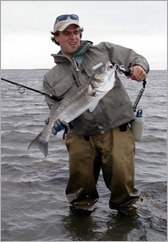 Summary: After a cool and very unsettled start to July, which brought heavy showers and strong winds, there were spells of drier and warmer weather during the later part of the month. Mean air temperatures overall were below normal across much of the country, however, and it was the coolest July for between 11 and 16 years at a number of stations. As the charts of daily values on page 12 indicate, both minimum and maximum temperatures showed a general rise during the month, but maximum values in excess of 20°C Mild but mostly dull – dry in East and Southeast
Summary: After a cool and very unsettled start to July, which brought heavy showers and strong winds, there were spells of drier and warmer weather during the later part of the month. Mean air temperatures overall were below normal across much of the country, however, and it was the coolest July for between 11 and 16 years at a number of stations. As the charts of daily values on page 12 indicate, both minimum and maximum temperatures showed a general rise during the month, but maximum values in excess of 20°C Mild but mostly dull – dry in East and Southeast
Photo : Geoff from 1st Voyages des Peches Article – guided fishing – Magazine article
_____________________________________________________________________
July 2005
Dry in North but heavy spells in south and east – warm and dull
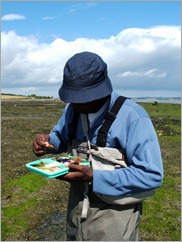 Summary: Rainfall totals for July varied considerably across the country. Bands of heavy rain affected parts of Leinster and Munster during the last week, while other areas received little. There were exceptionally heavy falls near southern and south-eastern coasts on the 23rd/24th, while another band of heavy rain affected south-eastern and eastern areas on the 28th/29th. Severe thunderstorms developed over the southern third of the country during the evening of the 12th, giving some torrential falls locally, while a tornado developed during the same evening near Myshall, Co. Carlow (see page 2). This variation in rainfall totals across the country is reflected in the fact that, while it was the driest July at Malin Head since 1983, it was the wettest at Rosslare since records began there in 1956. The number of wetdays (days with 1mm or more rainfall) during the month was close to the normal range for July of between 9 and 13. July was a warm month everywhere, with mean air temperatures of around one degree above normal generally.
Summary: Rainfall totals for July varied considerably across the country. Bands of heavy rain affected parts of Leinster and Munster during the last week, while other areas received little. There were exceptionally heavy falls near southern and south-eastern coasts on the 23rd/24th, while another band of heavy rain affected south-eastern and eastern areas on the 28th/29th. Severe thunderstorms developed over the southern third of the country during the evening of the 12th, giving some torrential falls locally, while a tornado developed during the same evening near Myshall, Co. Carlow (see page 2). This variation in rainfall totals across the country is reflected in the fact that, while it was the driest July at Malin Head since 1983, it was the wettest at Rosslare since records began there in 1956. The number of wetdays (days with 1mm or more rainfall) during the month was close to the normal range for July of between 9 and 13. July was a warm month everywhere, with mean air temperatures of around one degree above normal generally.
Photo: John from Canada, saltwater fly – subsequent cover Irish Angler magazine – guided fishing
_____________________________________________________________________
July 2006
Warmest July on record in places; sunny and mainly dry
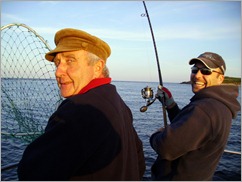 July was another very warm, dry and sunny month, continuing the pattern of fine summer weather set in June. Temperatures were above normal throughout almost all of the month; they were around two degrees higher than normal overall at most stations and three degrees higher at Clones. It was the warmest July for between 11 and 17 years in most places and the warmest on record at Malin Head, Clones and Casement Aerodrome; records at Malin Head extend back to 1885. Kilkenny had a total of 29 days during the month where the maximum temperature exceeded 20°C, with 9 of these days exceeding 25°C. The period between the 16th and 20th was particularly hot, when daily maxima reached over 25°C generally and above 30°C in a few places, the highest temperatures recorded since the record breaking month of August 1995. The values of 31.0°C and 29.9°C, recorded on the 19th at……..
July was another very warm, dry and sunny month, continuing the pattern of fine summer weather set in June. Temperatures were above normal throughout almost all of the month; they were around two degrees higher than normal overall at most stations and three degrees higher at Clones. It was the warmest July for between 11 and 17 years in most places and the warmest on record at Malin Head, Clones and Casement Aerodrome; records at Malin Head extend back to 1885. Kilkenny had a total of 29 days during the month where the maximum temperature exceeded 20°C, with 9 of these days exceeding 25°C. The period between the 16th and 20th was particularly hot, when daily maxima reached over 25°C generally and above 30°C in a few places, the highest temperatures recorded since the record breaking month of August 1995. The values of 31.0°C and 29.9°C, recorded on the 19th at……..
Photo: Diego Farnetti Italy, Cpt John Devereux – soft / hard lure fishing offshore – guided fishing
_____________________________________________________________________
July 2007
Another very wet month in east and southeast mostly cool but sunny
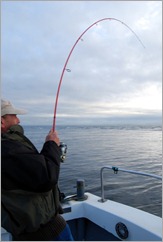 After the very wet weather of most of June in the east and south of the country, rainfall totals for July were again exceptionally high in the same areas. Like the previous month, high pressure remained well to the south of the country, allowing an uninterrupted succession of depressions with their associated frontal systems to move over Ireland until near the end of the month. These produced spells of rain or showers each day, with some locally heavy falls causing flooding, while there were severe thunderstorms and reports of tornadoes on a number of days. At least 1mm or rain was measured on each day at one or more stations in the 49-day period between June 11th and July 29th. Early summer rainfall totals (June and July) were more than 250% of normal over parts of Leinster
After the very wet weather of most of June in the east and south of the country, rainfall totals for July were again exceptionally high in the same areas. Like the previous month, high pressure remained well to the south of the country, allowing an uninterrupted succession of depressions with their associated frontal systems to move over Ireland until near the end of the month. These produced spells of rain or showers each day, with some locally heavy falls causing flooding, while there were severe thunderstorms and reports of tornadoes on a number of days. At least 1mm or rain was measured on each day at one or more stations in the 49-day period between June 11th and July 29th. Early summer rainfall totals (June and July) were more than 250% of normal over parts of Leinster
Photo: Michele from Belgium – soft plastic lure fishing offshore – guided fishing
_____________________________________________________________________
July 2008
Very wet and dull in most places: becoming warm after cool first half
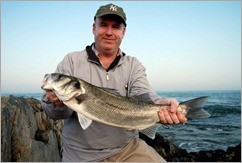 Much of the first half of July was wet and relatively cool, but warmer and drier conditions developed until the last few days of the month, when rain or showers again became widespread. High pressure was responsible for the settled conditions in the period after mid-month, but low pressure to the southwest of the country at both the beginning and end of July brought some heavy rain or showers in all areas, with thunderstorms on several days. Rainfall totals for the month were above normal except in parts of the west and northwest and were more than twice the July normal at stations in the east and south. It was the wettest July for more than 30 years at many stations in the south and southeast.
Much of the first half of July was wet and relatively cool, but warmer and drier conditions developed until the last few days of the month, when rain or showers again became widespread. High pressure was responsible for the settled conditions in the period after mid-month, but low pressure to the southwest of the country at both the beginning and end of July brought some heavy rain or showers in all areas, with thunderstorms on several days. Rainfall totals for the month were above normal except in parts of the west and northwest and were more than twice the July normal at stations in the east and south. It was the wettest July for more than 30 years at many stations in the south and southeast.
Photo: Niall Kelly, Carlow –saltwater fly onshore – on the water workshop
_____________________________________________________________________
July 2009
Wettest July for more than 50 years in places – near normal temperature and sunshine
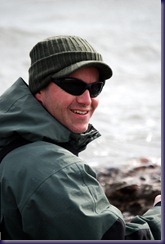 Apart from a short spell of dry weather between the 7th and 9th, rain or showers were recorded on each day during July, resulting in record high monthly totals at some stations. The weather pattern of the previous two summers was repeated, with Atlantic depressions tracking over or close to Ireland, producing substantial falls of rain at times, with frequent thunderstorms. The north and northwest of the country fared relatively well, however; in these areas the lowest rainfall totals were recorded and both mean temperatures and sunshine amounts were well above normal.
Apart from a short spell of dry weather between the 7th and 9th, rain or showers were recorded on each day during July, resulting in record high monthly totals at some stations. The weather pattern of the previous two summers was repeated, with Atlantic depressions tracking over or close to Ireland, producing substantial falls of rain at times, with frequent thunderstorms. The north and northwest of the country fared relatively well, however; in these areas the lowest rainfall totals were recorded and both mean temperatures and sunshine amounts were well above normal. 
Photo (above): David Norman, Cork - at his first Bass Fishing Workshop – on the water bass fishing workshop
Photo (right): Alan O’Neil, Waterford – at his first saltwater fly fishing workshop – on the water bass fishing workshop
_____________________________________________________________________
July 2010
Warm and dull: very wet in places
 July was the first month of 2010 which was dominated by weather patterns associated with Atlantic depressions. Slow-moving frontal systems brought significant falls of rain at times, while most days were cloudy but mild, with south to south westerly winds. Rainfall totals for July were above normal everywhere and were more than twice the average at some stations; it was the fourth successive July with rainfall totals much in excess of normal over most of the country. Unlike previous years, however, the relatively dry weather of the preceding months of 2010 and consequent high soil moisture deficits helped to prevent significant flooding during this month.
July was the first month of 2010 which was dominated by weather patterns associated with Atlantic depressions. Slow-moving frontal systems brought significant falls of rain at times, while most days were cloudy but mild, with south to south westerly winds. Rainfall totals for July were above normal everywhere and were more than twice the average at some stations; it was the fourth successive July with rainfall totals much in excess of normal over most of the country. Unlike previous years, however, the relatively dry weather of the preceding months of 2010 and consequent high soil moisture deficits helped to prevent significant flooding during this month.
Photo: Casper Hansen Denmark – Saltwater fly onshore – guided fishing
_____________________________________________________________________
July 2011
Dull and cool with below average rainfall in parts
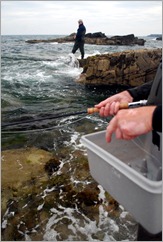 The majority of mean air temperatures for the month were lower than normal, with most temperatures across the country being between 0.5°C and 1°C below average. Dublin Airport reported its coolest July in 46 years with a mean air temperature of 13.8°C, while some stations in the south and southwest recorded their coolest July since 1988. Almost all maximum temperatures for July were recorded during the periods of high pressure in the latter part of the month, while the majority of minimum air temperatures were recorded on 6th, 22nd and 23rd. The lowest minimum air temperature during July of 4.7°C at Casement Aerodrome was the lowest for the station in 27 years, while Cork Airport’s minimum air temperature of 6.2°C was the lowest measured at that site since 1965
The majority of mean air temperatures for the month were lower than normal, with most temperatures across the country being between 0.5°C and 1°C below average. Dublin Airport reported its coolest July in 46 years with a mean air temperature of 13.8°C, while some stations in the south and southwest recorded their coolest July since 1988. Almost all maximum temperatures for July were recorded during the periods of high pressure in the latter part of the month, while the majority of minimum air temperatures were recorded on 6th, 22nd and 23rd. The lowest minimum air temperature during July of 4.7°C at Casement Aerodrome was the lowest for the station in 27 years, while Cork Airport’s minimum air temperature of 6.2°C was the lowest measured at that site since 1965
Photo: John Hardy, Bristol UK – Saltwater fly onshore – guided fishing
_____________________________________________________________________
July 2012
All mean temperatures were below average with differences from average largest in the North and Northwest, up to -1.9°C at Markree. Mean temperatures for July ranged from 12.6°C at Knock Airport, its coolest July since 1998 (14 years), to 14.9°C at Shannon Airport. Malin Head reported a mean temperature of 13.0°C, 1.3°C below its average and its lowest July mean temperature since 1972 (40 years). Most remaining stations reported their coolest July in at least 10 to 24 years. Monthly mean maximum and minimum temperatures were below average.
Rainfall was above average nearly everywhere, except at Finner in the Northwest which reported a long-term average (LTA) value of around 95%. Remaining stations reported LTAs of between 100% and 200% with highest percentage values reported in the Dublin area, Midlands and Southwest.
Photo: John Rix, Chichester UK – Saltwater fly offshore – guided fishing
_____________________________________________________________________
Saturday 18 August 2012
Cinnabar
‘…..Ghost town and haunted love
Raise your voice, sticks and stones may break my bones
I'm talking loud not saying much’
Friday 17 August 2012
Thursday 16 August 2012
Wednesday 15 August 2012
Event horizon
Is this the perfect storm that will ‘trigger’ bass fishing in its wake along the southern coasts?
And if they do return will anything have changed? Have we learned anything genuinely important from their absence?
All under 12’s training cancelled for this evening!
Weather Warnings
Issued at 14 August 2012 - 11:20
Weather Warning
A combination of high winds, heavy rainfall, abnormally low pressure and high tides will cause dangerous conditions in south Munster and east Leinster during Wednesday 15th August.
Gale to strong gale force easterly winds, later veering south-easterly to southerly, will occur. Frequent spells of rain will result in accumulations of 30 to 50 mm generally, with higher totals possible in mountainous areas. The will be a high risk of coastal and river flooding.
Valid 0000 15/8/12 to 0000 16/8/12
Gale Warning
Easterly gales will develop this morning on all coasts of Ireland and on the Irish Sea; winds veering southeast to south will reach storm force on southern coasts and strong gale force at times elsewhere.
Issued at 06:00 on 15-Aug-2012
Small Craft Warning
See gale warning.
Issued at on
Blight Warning
Weather conditions conducive to the spread of potato blight will occur in parts of Munster and Leinster over the next few days especially in the coastal areas.
Issued at 01:00 on 9-Aug-2012

Monday 13 August 2012
Wednesday 8 August 2012
Experiencing a new (hopefully temporary) reality
Its certainly a new challenge for me and my business, the decreasing numbers of fish that is! Lets be honest here there’s no avoiding it, bass are largely absent from our coasts at this time. Talking about it openly has its risks and of course its own complications regarding the possible reasons any or all of which could be a cause for their absence.
Funny thing though, there’s largely a BIG silence around their absence, or else an exaggerated picture of their presence. Yes there are fish to be caught, some, but at this time this is the exception rather than the rule. So forums and blogs and websites remain quiet – not voicing the obvious but infrequently reporting an ‘exceptional’ fish.
Four bass anglers for four days for four fish – a frequent unit of effort calculation that sums up the real situation.
Staying silent about it is of course another strategy, an easy one.
Whether it be a natural phenomena, a change in behaviour or something more serious its largely extant around our normal prolific ‘bass coasts’ at this time. For me I need to strike the balance between fairness and expectation with customers currently arriving at my door.
Again yes there are fish to be caught but the unit of effort is enormous, has been for weeks and weeks. I have been personally motivated over the last twenty day run by the positive attitude of my customers, their eagerness to learn new techniques, presentations, casting, even new locations. As a bass fishing guide (and where it fits) I have had to push all my timings, options, variations in equipment and solutions, techniques and experience to be at its very best.
If you’re a recreational angler I share in your frustration, as a person who largely makes his living from Guided Bass Angling well I guess its a very different and worrying perspective. I remain optimistic and now have a weeks holidays ahead to think and gather my thoughts.
When they come back will we ask what was all the fuss about?
What fuss exactly?
Tuesday 7 August 2012
Twenty days–twenty ways-twenty places-so many moments
After 20 days of remarkable experiences with remarkably patient, enthusiastic and great people I can only reflect on the many many moments. The methods and locations, from shallow running surf through driving current, into estuaries, climbing out onto sunny flats, from distance casting soft baits to double hauling ten inch flies fished on T-17 and XL50’s!
The fun the frustration the joy the tired sore bones and muscles and wet waders and resignation and hope and ready to try again and again.
Londoners, Dubliners, Newcastle, Ireland, France, men and women battling the environment, the weather, reaching within themselves to push the techniques to perfect it to realise that no forum or book or blog can replace learning it, doing it!
Perseverance has its own rewards. Thanks to all of you. - Jim
New Website
The beginning AND the end…
Forwarded to - The Irish Bass Policy Group (David McInerny, John Quinlan, Shane O Reilly, Mike Hennessy, Dr William Roche, Dr Nial O'Ma...
